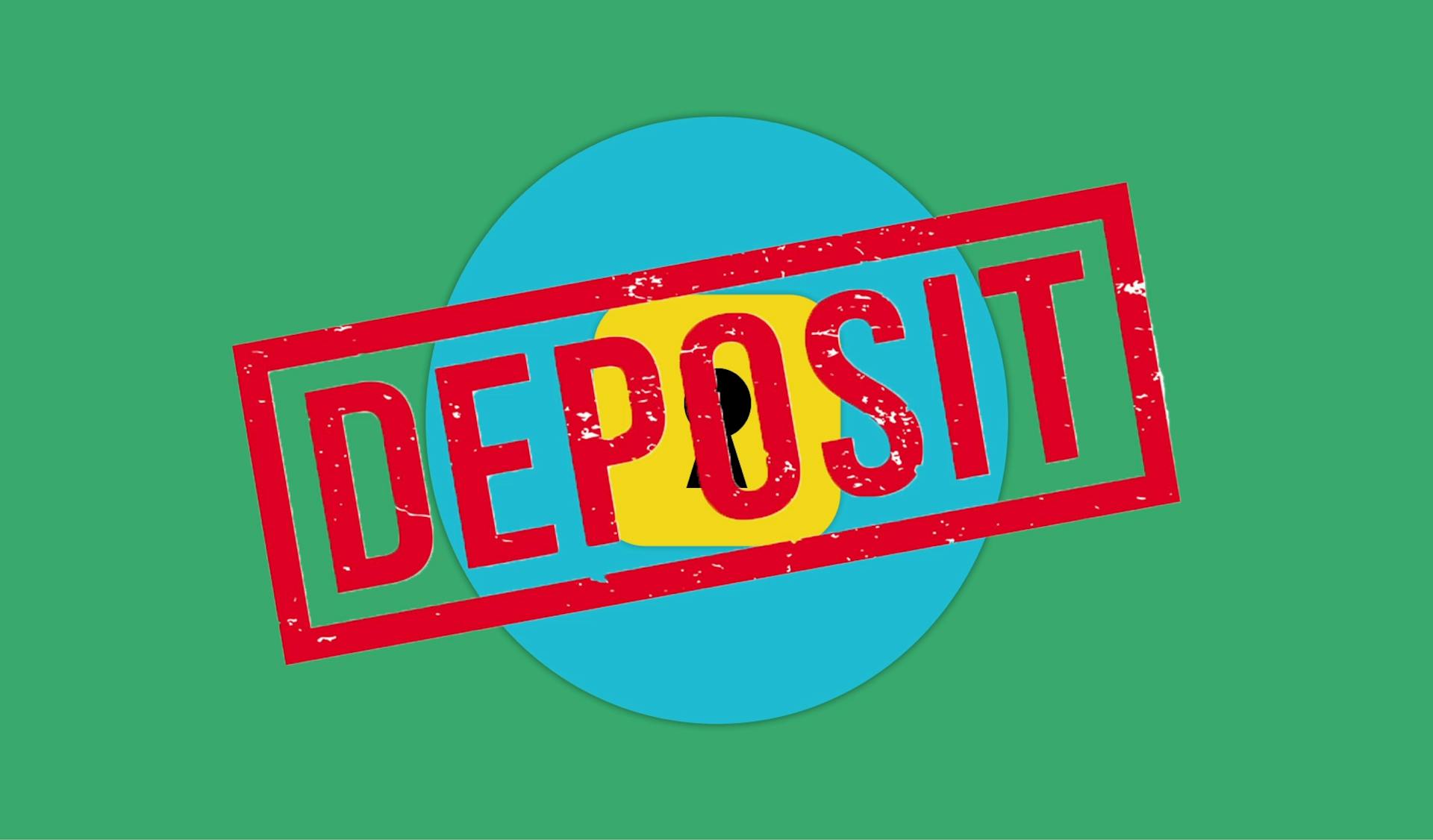
A loan covenant is a critical component of loan agreements that can make or break a business's financial stability.
It's essentially a promise made by a borrower to the lender to maintain a certain level of performance, such as a minimum debt service coverage ratio.
This promise is usually tied to specific financial metrics, like interest coverage ratio, debt-to-equity ratio, or cash flow.
A loan covenant is a legally binding agreement that can have significant consequences if not met, such as penalties, fees, or even loan default.
For example, a company might be required to maintain a minimum interest coverage ratio of 2:1, meaning their earnings before interest and taxes must be at least twice their interest payments.
Recommended read: Current Cash Coverage Ratio
Definition
A loan covenant is a promise made by a borrower to their lender that outlines specific financial or operational requirements that must be met. These requirements can include maintaining certain financial ratios, such as a maximum debt-to-asset ratio.

Covenants can cover a wide range of topics, including minimum dividend payments, working capital levels, and key employee retention. Once a covenant is broken, the lender typically has the right to take action to reduce their risk.
There are three primary types of covenants: affirmative covenants, negative covenants, and financial covenants. Affirmative covenants require the borrower to take specific actions, while negative covenants restrict certain actions or behaviors. Financial covenants measure the borrower's performance against financial projections.
Negative loan covenants, for example, can limit the amount of debt a business can hold or restrict shareholder dividends. These covenants create boundaries around ownership or financial matters to protect the lender's interests.
Intriguing read: Money Lender Application
Types of Loan Covenants
Loan covenants can be categorized in various ways, but they generally fall into two main types: standard and non-standard. Standard loan covenants are outlined in a boilerplate format, meaning they're standard for all borrowers.
Standard loan covenants outline circumstances or behaviors that are often taken for granted but must still be stipulated in a credit agreement for the legal enforceability of the contract. Examples include requiring the borrower to make principal and interest payments when due.
Broaden your view: Brk.b Outstanding Shares

Non-standard loan covenants, on the other hand, are designed based on particular characteristics or risks related to a credit request or a borrower. They're typical with commercial lending since business operations and financial results are more complex than personal lending.
Some examples of non-standard loan covenants include requiring the borrower to provide an aged accounts receivable listing and a compliance certificate monthly, or not paying any dividends to common shareholders without the express written consent of the lender.
It's worth noting that loan covenants can also be categorized as positive or negative. Positive loan covenants remind borrowers to carry out specific tasks or activities to ensure their business's financial health, such as paying all business and employment-related taxes or maintaining adequate insurance policies.
Negative loan covenants, on the other hand, are used to create boundaries or firewalls around certain ownership or financial matters, such as limiting the total amount of debt a business can hold or preventing acquisitions or mergers without the lender's express permission.
Here are some examples of loan covenants:
Financial loan covenants are used to measure how well the borrower performs against the financial projections set out by the CFO, owner, or management. They can include metrics such as the current ratio or the borrowing base calculation.
Using Loan Covenants

Using loan covenants can actually help your business by reducing the cost of the loan. By agreeing to operate under the lender's repayment conditions, you may be offered favorable terms in return.
Loan covenants ensure that a borrower's financial performance supports the profitability and cash flow needed to repay the loan. They serve as risk management safeguards for the lender.
To mitigate specific risks, loan covenants can require businesses to take specific steps, like maintaining a certain debt-service coverage ratio (DSCR), providing audited financial statements, and keeping accurate accounting.
Expand your knowledge: Payday Lender Card
How They Are Used
Loan covenants are used to help align incentives between the borrower and the lender, and to mitigate transaction risks.
By requiring or restricting specific actions or circumstances, loan covenants can improve the likelihood of full loan repayment. This is especially true in commercial lending, where lenders want to see cash retained within the corporation to provide a cash buffer or to repay outstanding credit.

High leverage or gearing can be a risk that lenders want to mitigate, so they may require the borrower to deleverage as quickly as possible to bring their leverage ratios back to long-term expectations or industry norms.
Loan covenants are typically monitored quarterly to reduce the burden of oversight, and failure to comply with a covenant could result in penalties or the lender's calling the loan in default.
Unexpected events, such as a sudden rise in material expenses, may cause a borrower to violate a covenant, but lenders are often flexible in these situations if the borrower shows they're managing the situation well or building a stronger business.
Structured properly and followed closely, loan covenants can help you avoid payment problems and ensure a smooth and timely debt repayment.
You might enjoy: Debt Covenant Definition
Marketplace Competitiveness
Borrowers generally prefer fewer and less restrictive loan covenants, which can be a major factor in a financial institution's success.
If a financial institution consistently presents loan proposals with excessive covenants, they may lose business opportunities to competitors who offer more flexible terms.
All other factors being equal, borrowers will often choose the loan with fewer restrictions, making it essential for financial institutions to strike a balance in their loan covenants.
This can be a delicate balance to achieve, but it's crucial for maintaining a competitive edge in the market.
Loan Covenant Breaches

A loan covenant breach is considered an event of debt default, which can have serious consequences for the borrower. A covenant breach occurs when a borrower fails to uphold the agreed-upon terms of a loan covenant.
Not all covenant breaches are created equally, however. For example, late financial reporting may be an issue that can be resolved within a few days or a week, whereas fraudulent financial results presented to a lender would be considered a severe technical default.
A risk manager must review all covenant breaches and document them in writing by the lender. The lender will then determine the severity of the breach and decide on any necessary actions.
Potential Pitfalls
Loan covenants can have significant ramifications for lenders if they are too restrictive. This can lead to difficulties in enforcing the covenants, which can ultimately harm the lender's interests.
Loan covenants that are overly restrictive can limit the borrower's ability to operate their business effectively, potentially causing financial hardship. This can lead to a breach of the loan covenant.

Employing loan covenants without a clear understanding of their impact can lead to unintended consequences. This can result in a loss of trust between the lender and the borrower.
Loan covenants that are too restrictive can also limit the lender's ability to recover their investment if the borrower defaults on the loan. This can make it difficult for the lender to recoup their losses.
Recommended read: Cash Advance Direct Lender
Breaches
A loan covenant breach can have serious consequences, including being considered an event of debt default. This means the lender can take action to protect their interests.
A breach of covenant can be a financial default, such as a delinquent payment, or a technical default, like late reporting. Risk managers review all covenant breaches and document them in writing.
Not all covenant breaches are created equally. For example, a client with a DSC covenant of 1.25 : 1 who reports a DSC ratio of 1.23 : 1 is unlikely to receive an accelerated repayment notice from the bank.
You might like: Credit Union 1 Saving Account Fee

Fraudulent financial results, on the other hand, would be considered a severe technical default with immediate and serious legal consequences for the borrower.
Here are the types of covenant breaches that require attention from a risk manager:
- Financial defaults, such as delinquent payments
- Technical defaults, like late reporting
In some cases, a lender may allow a borrower to remedy a covenant breach. This typically involves obtaining proficient financial metrics that comply with the covenant and sustaining those metrics over an agreed-upon timeframe.
For your interest: Debt Covenant Compliance
Commercial Real Estate and Loan Covenants
In commercial real estate, loan covenants are a crucial aspect of loan agreements that property owners must understand.
If the commercial real estate market slows down, as it has with inflation, rising interest rates, and economic uncertainty, property owners may face challenges such as tenants not paying rent or asking for rent deferrals.
As a result, landlords may look to negotiate a loan modification or short-term extension with their existing lender.
Before doing so, it's essential to revisit loan documents to understand current loan covenants, including the ramifications of failing to meet them, as failing to meet these covenants can have serious consequences.
A unique perspective: Patelco Failing
Commercial Real Estate Market Slows

As the commercial real estate market slows, property owners are facing a perfect storm of challenges. Inflation, rising interest rates, and an uncertain economy are all taking their toll.
Tenants are not paying rent, and some are even asking for rent deferrals. This is a major concern for property owners who rely on timely rent payments to stay afloat.
Lenders are becoming increasingly reluctant or unable to provide refinancing or extend maturing debt. This can leave property owners with limited options.
Landlords may look to negotiate a loan modification or short-term extension with their existing lender. However, before doing so, they need to revisit their existing loan documents to understand their current loan covenants.
Failing to meet loan covenants can have serious ramifications for property owners and their guarantors.
Commercial Real Estate
Commercial real estate loans often come with loan covenants that borrowers must adhere to, such as maintaining a minimum debt service coverage ratio (DSCR) of 1.25 or higher.

These covenants can be restrictive, but they also provide lenders with a level of comfort and security in extending credit to borrowers. Borrowers must carefully review and understand these covenants before signing a loan agreement.
A loan covenant can be triggered by a single missed payment, causing the lender to reevaluate the loan and potentially call the loan due. Borrowers should prioritize regular payments to avoid defaulting on their loan.
Commercial real estate loan covenants can also include restrictions on property usage, such as prohibiting certain types of businesses or requiring specific zoning. Borrowers should ensure they understand these restrictions before purchasing a property.
A lender may also include a covenant that requires borrowers to maintain a minimum occupancy rate, such as 80% or higher, to ensure the property is generating sufficient income to cover expenses.
Take a look at this: Capital Budgeting Decisions Include
Examples
In business, a loan covenant may disallow a company from acquiring another company.
A loan covenant may require a certain amount of cash on hand.

Companies must carefully consider these restrictions when applying for a loan.
A loan covenant can also limit a company's ability to pay dividends to its shareholders.
This can be a significant restriction for companies that rely heavily on dividend payments to attract investors.
In property law, a covenant may require the grass to be cut a specific number of times per year.
These types of covenants are often found in homeowners' association rules or property deeds.
A loan covenant is a promise from a borrower to adhere to certain financial guidelines.
A religious covenant, on the other hand, is a promise from God to never send a destructive flood like the one Noah experienced again.
This type of covenant is not typically found in loan agreements.
Sources
- https://www.realogicinc.com/common-commercial-real-estate-loan-covenants/
- https://corporatefinanceinstitute.com/resources/commercial-lending/loan-covenant/
- https://www.truist.com/resources/commercial-corporate-institutional/financing/articles/understanding-loan-covenants
- https://www.investopedia.com/terms/c/covenant.asp
- https://gocardless.com/guides/posts/what-is-a-loan-covenant/
Featured Images: pexels.com


